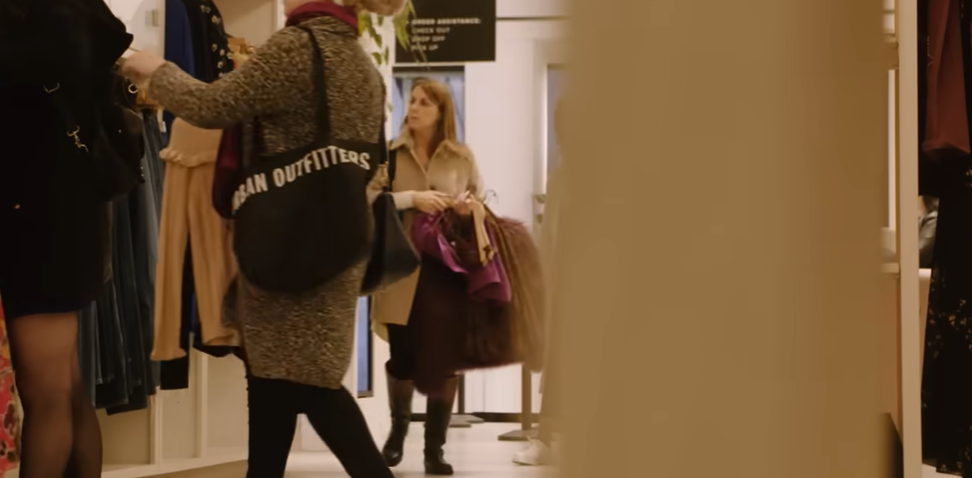With ruthless efficiency, the fast fashion machine turns trends into profits more quickly than the majority of consumers can keep up. Millions are persuaded to buy more, wear less, and repeat by its incredibly successful low-cost, high-volume, emotionally charged marketing strategy. However, a more subdued uprising is taking place throughout the same retail environment. Disposable apparel is losing ground to brands that promise transparency, longevity, and dignity, according to ethical consumers. There has never been a more obvious conflict between sustainability and speed.
A cycle of immediacy served as the foundation for the success of companies like Zara, Shein, and Boohoo. Ten days after a celebrity shares a picture, a nearly identical outfit can be found online for a much lower cost. Although the pace is exhilarating, it is also extremely harmful. Underneath the glossy pictures are garment workers, primarily women, who toil away for pitiful pay. The model thrives on their lack of visibility, resulting in a highly productive but ethically dubious industry.
Outrage sparked the awakening for a lot of consumers. Fashion’s conscience was permanently tarnished by pictures of the 2013 Rana Plaza collapse in Bangladesh, which claimed the lives of over a thousand workers. Due to the widespread dissemination of those images, consumers were compelled to look past price tags and pose awkward queries regarding the origins of their clothing. Since then, the movement for ethical fashion has accelerated dramatically, especially among younger generations who see consumption as an act of activism rather than luxury.
| Name | Alex Crumbie |
|---|---|
| Profession | Journalist and Sustainability Researcher |
| Affiliation | Ethical Consumer Research Association |
| Known For | In-depth investigations into environmental and labor issues within fashion |
| Major Works | “What Is Fast Fashion — And Why Is It a Problem?” |
| Expertise | Environmental ethics, fair labor, corporate accountability |
| Career Highlights | Advocated for sustainable consumption and circular fashion practices |
| Reference Link | https://www.ethicalconsumer.org/fashion-clothing/what-fast-fashion-and-why-it-problem |

Originally a specialized subculture, secondhand shopping has grown into a widespread social movement. With the help of apps like Depop, Poshmark, and Vinted, resale became a way of life and a contemporary way to fight waste. The excess-driven unboxing clips that once drove fast fashion’s dominance have given way to “haul” videos that feature vintage finds, and influencers proudly display their thrifted clothing. In addition to being fashionable, this change greatly lessened the environmental impact of producing new apparel.
In terms of politics, France is in the lead. Its new laws, which recognize the catastrophic ecological costs of unrelenting consumption, penalize ultra-fast fashion with additional fees and advertising bans. Companies may be subject to a surcharge of up to ten euros per item by 2030 in order to finance public education and recycling programs. This progressive law establishes a very clear precedent: convenience can no longer take precedence over morality. Other nations, such as the US and Australia, are cautiously adopting similar policies, giving supply chain transparency and circular business models top priority.
Even though these initiatives show promise, the economic disparity still poses a threat. Global giants’ marketing power makes it difficult for ethical brands to compete. An entire sustainable brand’s yearly budget can be exceeded by a single Shein campaign. However, the values of consumers are changing. Instead of linking affordability to accessibility, many people are starting to link it to exploitation. Once a major force behind fast fashion, social media is now spreading the word about garment workers’ demands for fair pay. The storyline has significantly improved, moving from mindless consumption to thoughtful citizenship.
The most eerie legacy of fast fashion is still environmental harm. The industry uses more than 90 billion cubic meters of water annually, contaminates rivers with harmful dyes, and releases microplastics that enter both human bodies and the ocean. Clothing is one of the most plastic-intensive products on the planet, with synthetic fibers made from fossil fuels now accounting for nearly 70% of all textiles. The notorious mountains of abandoned clothing in the Atacama Desert are a disturbing but avoidable visual representation of our society’s overconsumption.
Despite these depressing figures, there is still hope. One particularly creative approach that rethinks clothing as a continuous cycle rather than a disposable item is circular fashion. Companies such as Veja, Patagonia, and Nudie Jeans are prime examples of this change. While Nudie Jeans encourages long-term ownership by providing free lifetime repairs, Veja’s sneakers are manufactured under fair labor conditions and repaired in European boutiques. These business models demonstrate how ethics and economics can coexist peacefully because they are not only sustainable but also remarkably affordable over time.
This change’s social component is just as important. Luxury consumers are no longer the only ones who engage in ethical consumption. Access to sustainable fashion is now more widely available thanks to rental services, repair cafés, and thrift culture. Instead of being a financial compromise, renting a dress for a gala or trading a jacket with friends has evolved into a thoughtful, imaginative decision. Because of this reimagining of fashion practices, sustainability is especially advantageous for people who value integrity and style.
The movement has also been influenced by public figures and celebrities. Stella McCartney’s unwavering support of cruelty-free fashion and Emma Watson’s collaboration with Good On You have been incredibly successful in bridging ethics and glamour. Their impact shows that ambition and beauty don’t have to be sacrificed for sustainability. It just calls for creativity and responsibility, which are traits the industry has long disregarded.
Fast fashion, however, continues to profit from psychological manipulation. Influencer-driven marketing and temporary discounts appeal to the same emotional triggers that feed addiction. Even as awareness increases, customers continue to return because of the promise of “newness.” Although ethical consumers are aware of this cycle, they must balance their own concerns, such as intention and access, and conscience and affordability. This paradox emphasizes the need for both individual accountability and systemic change.


